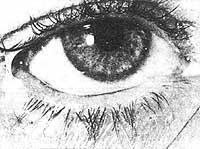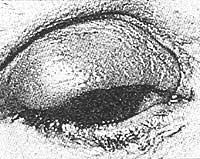Hooks and hooks

Who doesn't have a relative, friend, neighbor, or companion who has had a red grain on his eyelid? Our topic today, of course, is not vital, but in its smallness the stye is annoying and painful, and unlike other cases, prevention is possible.
The specialists distinguish two types of hooks: one external and one interior. The most common is the exterior, which everyone knows. His
Source: motif
It is an inflammation or inflammation of the glands of Zeis, so its secretion is expelled to the outside through the lashes. But there is also another type of hooks, the inmates, which form in the glands of Meibomio. Both external and internal hooks begin as an inflammatory process: the environment becomes red, feels chopped, the vikor is growing.
The reasons are many and the topics or false data judgments about this problem. There are those who think that hooks are a thing of children, and that is not true, although in children they are formed more than in adults. Why appear more often in childhood? Because children touch their eyes in large areas (and not always with clean hands) and on the other hand, they have less resistance to contaminated or contaminated environments. Hygiene is very important and in this field children do not walk with attention.
But there are other causes such as chronic conjunctivitis, incorrect visual graduation, or the absence of glasses. When a person does not use an adequate antioch; the effort he must make, as it were, weakens the defenses of the eyelids and increases the risk of suffering hooks. The same occurs when a person works or reads for hours with inadequate light.
Finally, in other cases, hooks are associated with some general body problems: infections (decreased defenses) and diseases such as diabetes.
Hooks can be prevented, but this prevention is very general. First, analyze the vision (and all structures and systems around the eye): whether the vision is adequate, whether it needs glasses, or whether the person has other chronic problems. The second prevention measure, and undoubtedly the simplest and most effective, is adequate hygiene. Dirt and hooks are good friends: normally the lack of hygiene has a logical and essential consequence. Hygiene measures must be carried out especially in children, fostering from small, adequate and healthy habits.

But, in any case, let's assume that a stye has been created and that it has already appeared to us in the eye: we see a very intense sting and some slight discomfort, but the eyelid is not yet very widespread or too reddish. In this first phase the cold will paralyze the process and the inflammation will not prosper: a cold key or a piece of ice wrapped in a handkerchief can be of great influence in the first ten or twelve hours.
However, if the process has evolved and a little pus appears, the cold is of no use at all and we will have to use a totally inverse remedy: heat, to accelerate circulation and to arrive the inflammation. The gallbladder appears more red, bigger, but the inflammation ends earlier.
In some cases it may be necessary to remove the tab to facilitate the removal of the liquid and remove the stye. It may also be necessary to go to a specialist, who raises the shore and, if necessary, extracts it completely. But this is uncommon and in general the stye will be no more than a small nuisance that will disappear in a few days.





